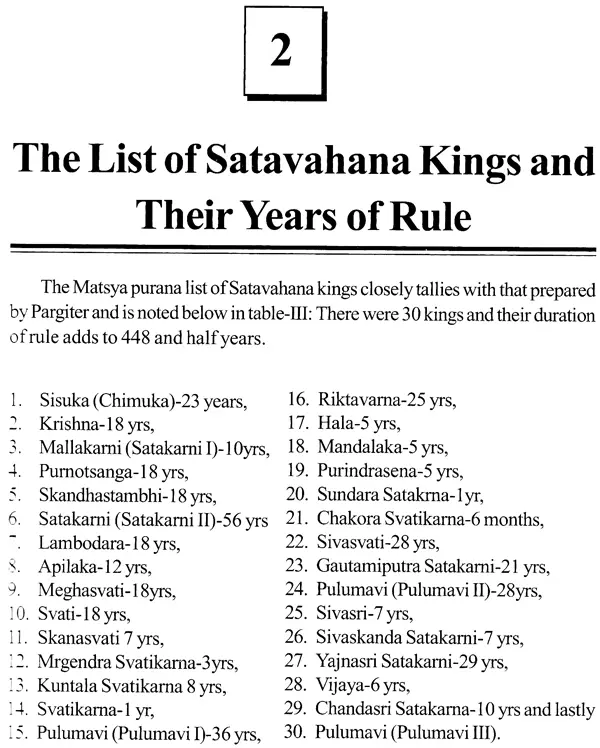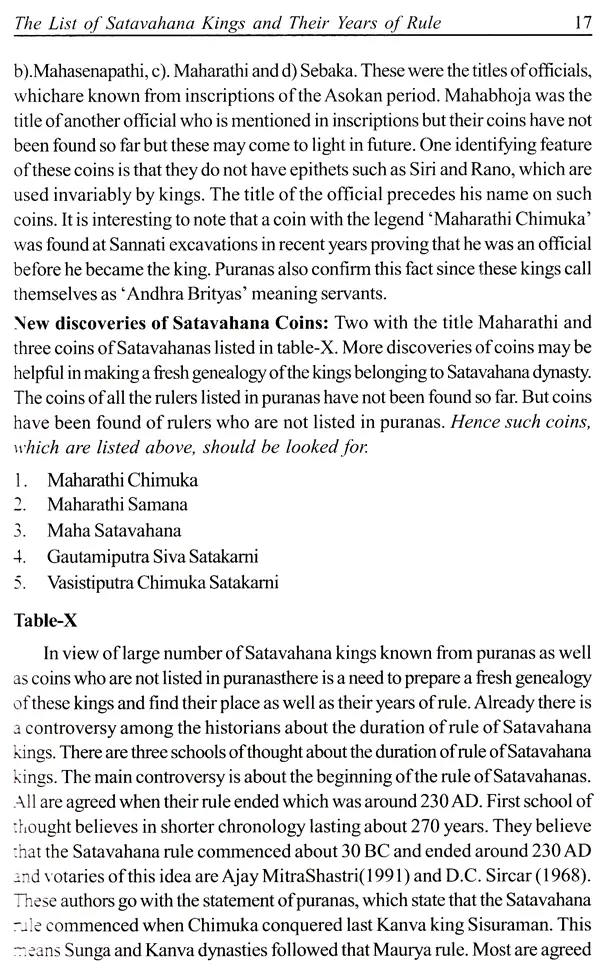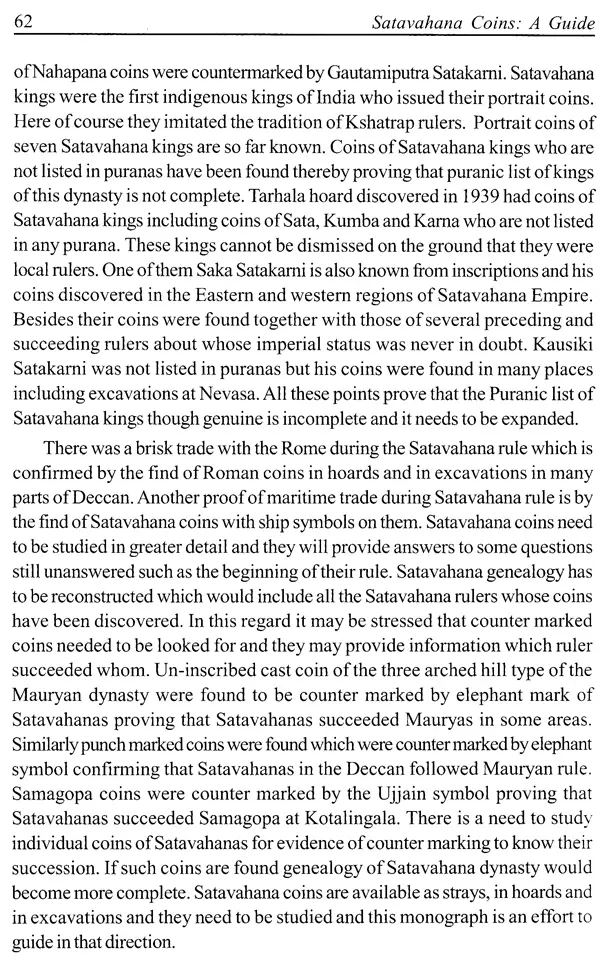
Satavahana Coins - A Guide
Book Specification
| Item Code: | UAS698 |
| Author: | Deme Raja Reddy |
| Publisher: | B.R. Publishing Corporation |
| Language: | English |
| Edition: | 2017 |
| ISBN: | 9789386223289 |
| Pages: | 66 |
| Cover: | HARDCOVER |
| Other Details | 9.00 X 6.00 inch |
| Weight | 270 gm |
Book Description
Satavahana was one of the most illustrious dynasties of ancient India who according to 'puranas' ruled over the Deccan and central India after the Mauryas, Sungas and Kanvas. It was indeed an indigenous dynasty that started from the Kotalingala on the banks of River Godavari in Telangana and revived the Vedic Indian culture. Satavahanas left behind great works of art such as those at famous Sanchi and Amaravati 'stupas' and rock cut temples in western India. During their long rule Satavahana dynasty provided peace, prosperity through foreign trade and they patronized a kind of art which flourished for many centuries that spread to other countries such as Sri Lanka and south-east Asia. Hence it was no surprise that Satavahana period is listed as one of the two periods of peace and prosperity in 5000 year history of India. Satavahanas issued coins made of copper, lead, potin and silver. The language of Satavahana coins was Prakrit except for the reverse side of the rare silver coins which was ancient Telugu. The script of the coins was Brahmi of the period. This book is a guide which helps in deciphering the legends on Satavahana coins and helps in identification of the coins of the individual Satavahana rulers.
Deme Raja Reddy: He is a well known neurosurgeon and a numismatist. He is now the president of the Numismatic Society of India and been the past president of the South Indian Numismatic society and editor of its journal 'studies in south Indian coins'. He authored several books on Deccan coins and published large number of articles in peer reviewed numismatic journals of India and U.K. This is one of the many guide books on coins written by the author.
Satavahana was one of the most illustrious dynasties of ancient India who according to 'puranas' ruled over the Deccan and central India after the Mauryas, Sungas and Kanvas. It was indeed an indigenous dynasty that started from the Kotalingala on the banks of River Godavari in Telangana and revived the Vedic Indian culture when the entire north and north-western parts of India came under the rule of foreigners starting from Greeks, Sassanians, Parthians, Kshatraps and lastly Kushans who were of Chinese descent. Satavahanas left behind great works of art such as those at famous Sanchi and Amaravati 'stupas" and rock cut temples in western India. The noted literary works of the era were 'Gathasaptasati' of Hala in poetry, 'Brihathkatha' of Gunadhya, an anthology of stories, 'Mrichikatica' of Sudraka in drama, 'Katantra Vyakarna' of Sarvavarman etc. During their long rule Satavahana dynasty provided peace,prosperity through foreign trade and they patronized a kind of art which flourished for many centuries that spread to other countries such as Sri Lanka and south-east Asia. Hence it was no surprise that Satavahana period is listed as one of the two periods of peace and prosperity in 5000-year history of India, the other being the Indus valley civilization period when planned cities were built for population of over 40000 people. The area of rule of Satavahanas at 1 BC and 200 AD were compiled by the historical maps of the world by James Haywood and published by the Princeton and Oxford Universities (Map. 1). Five of the 18 'puranas' namely Matsya, Vayu, Vishnu, Bhagavata and Brahmanda list the names of the kings belonging to this dynasty including their years of rule. Matsya Purana list of Satavahana kings is more detailed in content than other 'puranas'. Since there were minor differences in the lists of the kings in different 'Puranas", Pargiter compiled a comprehensive list, which included 30 kings of the Satavahana dynasty that ruled for 460 years. The source materials for the study of Satavahana history are the literary works, inscriptions and coins of that period. Among the three source materials, the Satavahana coins contributed a great deal to the study of its history. The present guide helps in the identification of Satavahana coins and also in the interpretation of the legends on the coins, which were written in ancient Brahmi script and Prakrit language and both of these are not familiar to the common people of today(Rapson 1908; Rama Rao 1961; Shastri 1972; Sarma 1980; Dutta 1990). The portrait coins of Satavahanas were unique in that they were the first indigenous rulers in the country who issued such coins depicting their portraits (Shastri 1991; Reddy & Varma 2009). In addition to the portraits of the kings and obverse legends on those coins are in Prakrit language and they introduced Telugu legends on the reverse side of their silver coins. Every Satavahana coin has a distinctive mark, which came to be known as Ujjain', and hence they can easily be identified. There are other symbols on these coins that vary. Following chapters identify sources of Satavahana coins, how to identify them. Satavahana portrait coins are unique and they are presented. The significance of the symbols on coins is explained in the following chapter. Flow chart of study of Satavahana coins is appended next. The epilogue concludes the monograph and select bibliography follows. The next chapter discusses the sources of Satavahana coins and the problems encountered in the study of ancient Indian coins in general and Satavahana coins in particular.
**Contents and Sample Pages**












